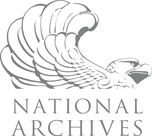 网页内容展示
网页内容展示
Open to the Public
The committee had gone through an astonishing amount of material in only five years, and by 1950, 85% of the collection had been processed. On March 17, 1950, those materials were opened to the public.
Over the next twenty years, the library saw a steady stream of researchers and museum visitors. As the number of researchers increased, so did the number of available collections. The variety of collections at the Library provides researchers with a unique look at FDR and his administration. The Library is not only a repository for Roosevelt’s papers and collections, but is also the home of papers donated by Harry L. Hopkins, Frances Perkins, Louis M. Howe, Samuel I. Rosenman, Henry Morgenthau, Jr. and others who were actively involved in shaping government policy during FDR’s presidency. To a great extent, FDR’s vision has been realized and the Library functions as a center for the study of the New Deal and American government in World War II.




